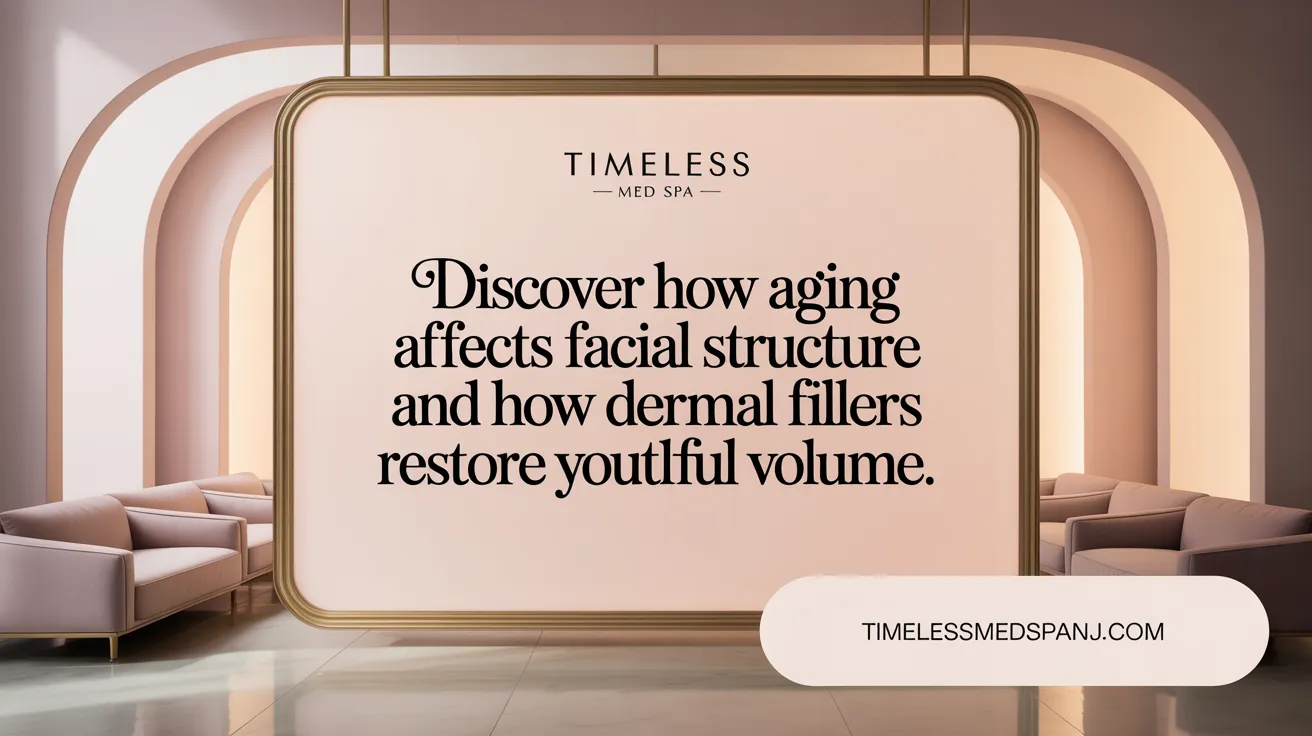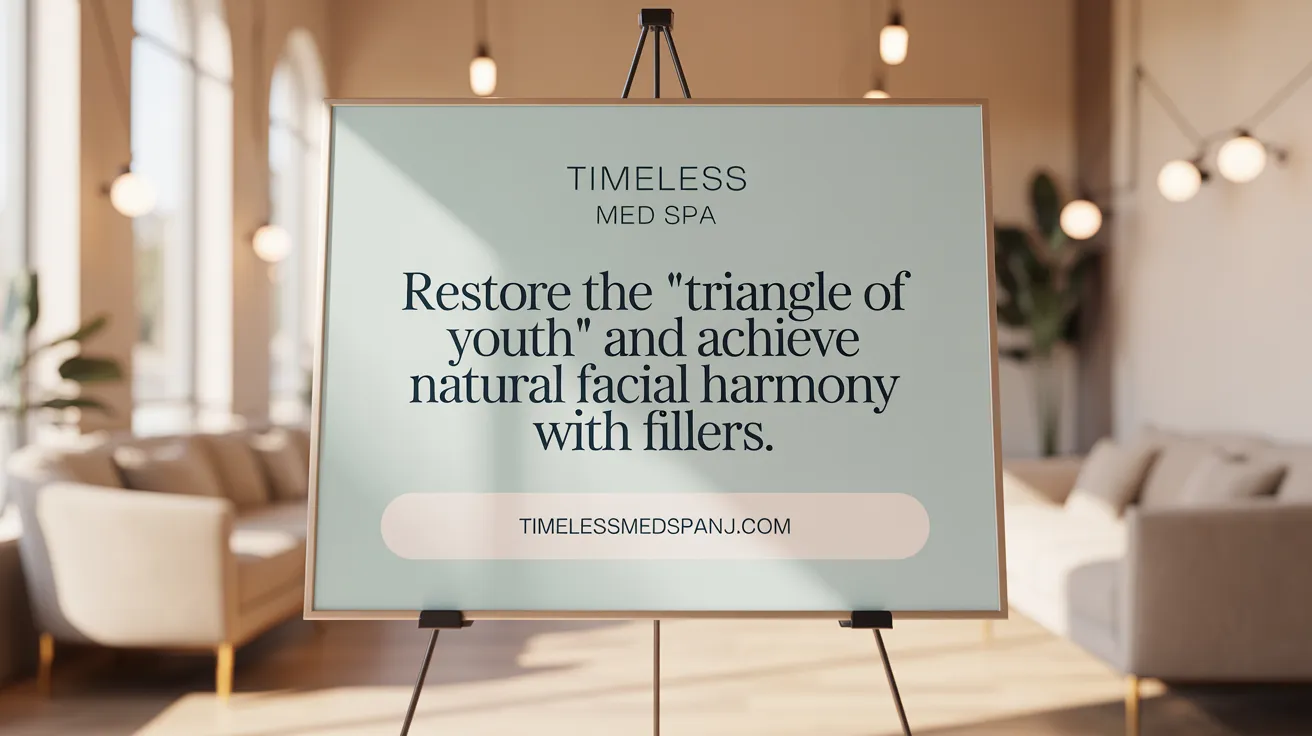Restoring Youthful Volume with Dermal Fillers
As aging progresses, the face undergoes a natural loss of volume, leading to sagging, hollowing, and wrinkles that alter youthful contours. Dermal fillers offer a minimally invasive, effective solution to restore facial volume, redefine contours, and smooth lines, helping individuals regain a refreshed and natural appearance. This article delves into the science, techniques, benefits, and safety of dermal fillers, providing a comprehensive understanding of how these treatments can rejuvenate the face and restore the ‘triangle of youth.’
The Science Behind Facial Volume Loss and How Dermal Fillers Work

What is the scientific basis of facial volume loss, and how do dermal fillers counteract signs of aging?
Facial volume loss is a natural part of aging that affects many aspects of facial structure. It results primarily from a combination of fat atrophy, collagen decline, and bone resorption. Over time, the deep and superficial fat compartments shrink and shift downward, creating hollows and sagging. Simultaneously, the bones that support the face, such as the cheekbones and jawline, resorb, weakening the framework that maintains facial contours. Collagen, a protein that provides skin firmness and elasticity, decreases with age, leading to thinner, more fragile skin (Facial aging and volume loss, Facial volume decrease with age, Causes of facial volume loss).
Dermal fillers are designed to address these changes by restoring volume where it has been lost. Most fillers contain hyaluronic acid, a natural sugar molecule in the skin that attracts water, providing immediate plumping and hydration (Hyaluronic acid in dermal fillers, Hyaluronic acid fillers, HA for skin hydration). Other biocompatible materials, such as calcium hydroxylapatite, poly-L-lactic acid, and polymethylmethacrylate, either provide volume directly or stimulate the body's own collagen production (Biostimulant fillers like Radiesse and Sculptra, Types of dermal fillers, Types of dermal fillers).
How do dermal fillers work to restore facial volume and contour?
Dermal fillers function by physically adding volume beneath the skin through precise injections (Injectable dermal fillers guide, Dermal fillers overview). By targeting specific depths and areas—such as the deep fat compartments, subdermal layers, and periosteal (bone) levels—they rebuild the natural contours of a youthful face (Injection techniques for fillers, Facial zones for volume restoration).
For example, injecting fillers into the malar or cheek area restores mid-face fullness, lifting sagging tissue and diminishing the appearance of hollow cheeks (Dermal fillers for hollow cheeks, Cheek contouring with fillers). Fillers can also define the jawline (Jawline contouring with dermal fillers), augment the lips (Lip fillers for volume), and improve the under-eye hollows, creating a more balanced and harmonious facial profile (Addressing under-eye hollows).
In addition to their volumizing effects, some fillers stimulate collagen production over time, enhancing skin firmness and elasticity (Collagen stimulation by fillers, Biostimulant filler lasting effects). This dual action provides both immediate aesthetic improvement and longer-term skin quality benefits.
The procedures are quick, typically completed within 30 to 60 minutes, with minimal downtime (Dermal filler treatment procedure, Quick recovery facial treatments). The immediate results are visible as the filler takes effect, smoothing wrinkles and restoring contours (Immediate results of dermal fillers). Over subsequent months, the body gradually absorbs the filler, but the collagen-stimulating properties of certain products help maintain rejuvenation longer (Duration of dermal filler effects).
Overall, dermal fillers offer a minimally invasive method for reversing age-related volume loss, supporting the facial architecture, and achieving natural-looking youthful contours (Natural-looking filler results, Facial contouring with dermal fillers).
Benefits and Advantages of Dermal Fillers for Facial Rejuvenation
 Dermal fillers have become a popular option for facial rejuvenation due to their ability to provide a non-surgical approach with minimal downtime. One of their main advantages is that they offer immediate visible improvements, allowing patients to see results right after treatment. This quick turnaround makes fillers an attractive choice for those seeking rapid aesthetic enhancement.
Dermal fillers have become a popular option for facial rejuvenation due to their ability to provide a non-surgical approach with minimal downtime. One of their main advantages is that they offer immediate visible improvements, allowing patients to see results right after treatment. This quick turnaround makes fillers an attractive choice for those seeking rapid aesthetic enhancement.
These treatments are highly customizable, with options tailored to address specific concerns such as volume loss, fine lines, or contour irregularities. Fillers like hyaluronic acid not only restore volume but also support skin hydration, leading to a plumper and more youthful appearance. Additionally, various types of fillers—such as calcium hydroxylapatite and poly-L-lactic acid—stimulate collagen production, providing longer-lasting results.
The safety profile of dermal fillers is well-established, especially when administered by experienced, qualified practitioners. Most side effects are mild and temporary, including bruising, swelling, or redness. With proper technique and patient assessment, the risk of serious complications like vascular occlusion or tissue necrosis remains rare.
Patients generally report high satisfaction due to the natural look and feel of the results, and the procedure can be repeated to maintain or enhance outcomes. Overall, dermal fillers offer a safe, effective, and minimally invasive solution to achieve a younger, more refreshed appearance.
Key Types of Dermal Fillers and Their Specific Uses

What types of dermal fillers are available, and what are their specific uses?
There are multiple types of dermal fillers, each tailored for certain aesthetic needs and with varying durations of effectiveness.
Hyaluronic acid (HA) fillers, such as Juvéderm and Restylane, are among the most popular. These soft gels are ideal for fine to moderate wrinkle smoothing, lip augmentation, and restoring volume to areas like cheeks and under the eyes. They typically last from 6 to 18 months depending on the product and site of injection.
Calcium hydroxylapatite (CaHA), marketed as Radiesse, is thicker and provides deeper tissue support. It is frequently used for correcting deeper lines, augmenting the cheeks, and contouring the face. Radiesse not only offers immediate volume but also stimulates collagen, with results lasting about a year or longer.
Poly-L-lactic acid (PLLA), known as Sculptra, works primarily as a collagen stimulator. It gradually adds volume and improves skin texture over several months, with effects lasting over two years. It is especially suitable for treating larger areas with volume loss, such as the temples and full face.
Polymethylmethacrylate (PMMA), under the brand Bellafill, contains microspheres designed for long-term support. It provides a semi-permanent or permanent effect and is typically used for deep static wrinkles, scars, and facial contouring that requires sustained volume.
Choosing the appropriate filler depends on multiple factors, including the specific facial area, the desired duration, and the patient's aesthetic goals. A qualified practitioner will evaluate these factors to recommend the best type for each individual. See more about choosing a qualified provider and treatment process.
| Filler Type | Main Uses | Duration | Additional Features |
|---|---|---|---|
| Hyaluronic acid | Wrinkles, lips, volume | 6-18 months | Reversible with hyaluronidase |
| Calcium hydroxylapatite | Deep lines, cheeks, contouring | Around 1 year | Stimulates collagen |
| Poly-L-lactic acid | Large volume loss, skin renewal | 2+ years | Collagen stimulating |
| PMMA microspheres | Scars, deep wrinkles | Several years | Long-lasting support |
This variety ensures tailored treatment plans that achieve natural results, restore youthful contours, and meet patient expectations for longevity and aesthetic enhancement.
Facial Contouring and the 'Triangle of Youth' with Dermal Fillers

How can dermal fillers help achieve the youthful 'triangle of youth' facial shape?
The 'triangle of youth' refers to the ideal facial shape often seen in young women, characterized by a wider upper face and a narrower lower face. As we age, structural changes occur: volume in the midface, particularly in the cheeks, decreases due to fat loss and bone resorption. This causes the face to invert from the youthful triangle to a more rectangular or oval shape.
Dermal fillers play a crucial role in restoring this youthful contour. By targeting the midface, especially the cheeks, fillers like Restylane LYFT® and VOLYME™ are used to lift and plump this area. This elevation in the cheeks re-creates the fullness and width that define the upper part of the triangle.
In addition, fillers can be applied to the jawline, chin, and temples to improve balance and symmetry. For instance, augmenting the jawline and defining the chin help to restore the natural taper of a youthful face, supporting the inverted triangle form.
Addressing the under-eye hollows with fillers reduces shadowing and further enhances overall facial harmony. These areas, when filled, reinforce the structural uplift and support needed to recreate the original triangular shape.
The success of this technique depends heavily on proper assessment and skillful injection. Using specific products like Restylane LYFT® for lifting the midface and VOLYME™ for volume in strategic zones ensures natural, harmonious results.
Artistic and technical considerations for natural results
Achieving a natural look with facial contouring requires a detailed understanding of facial anatomy and proportions. Experienced practitioners evaluate each patient’s unique facial structure, aging patterns, and aesthetic goals.
Precise injection technique, including the choice of depth and placement, is vital. Deep plane injections support the underlying architecture, while superficial touches can enhance the skin’s appearance.
Gradual, incremental injections are performed to avoid overcorrection and ensure the lift complements the existing features. The goal is subtle enhancement, revitalizing the face’s natural proportions rather than creating an exaggerated or artificial appearance.
Post-treatment, patients often notice immediate improvement, with final results maturing over a couple of weeks. Maintaining these results involves periodic touch-ups based on product longevity, the area treated, and individual aging processes.
In conclusion, dermal fillers provide a safe, effective, and customizable approach to restoring the 'triangle of youth' that defines youthful beauty. When administered by skilled professionals, this non-surgical technique can rejuvenate and reshape the face, giving back that vibrant, youthful appearance. For a deeper dive into facial contouring with fillers and best practices, see Facial contouring with dermal fillers and How dermal fillers restore volume.
The Dermal Filler Treatment Process and Expected Results

Initial consultation and facial assessment
The treatment process begins with an in-depth consultation where the healthcare provider evaluates the patient’s facial anatomy, discusses aesthetic goals, and identifies areas needing correction. During this assessment, the provider may mark specific injection points and take photographs to plan the procedure. This thorough evaluation is crucial to tailor the treatment plan to the individual’s unique facial structure, ensuring natural and harmonious results.
Injection techniques and use of needles or cannulas
Once the plan is finalized, the area is meticulously cleansed with antiseptic to reduce infection risk. To further enhance comfort, a topical anesthetic or nerve blocks may be applied. The provider then injects the filler using ultra-fine needles or cannulas depending on the treatment area. Techniques such as linear threading, serial puncture, or fanning are employed to distribute the filler evenly. Gentle massage might follow to smooth out the treated areas, ensuring a natural contour. Skilled injection techniques are essential to avoid complications and achieve optimal aesthetic outcomes.
Typical duration of the procedure and immediate outcomes
The entire procedure typically lasts between 15 minutes to an hour, depending on the number of areas being treated. Patients usually notice immediate improvement in facial volume and smoothness. Swelling and minor bruising are common post-injection but tend to diminish within a few days. Immediate results provide a glimpse of the enhancement, boosting confidence and satisfaction early on.
Post-treatment recovery and management of side effects
Post-procedure recovery is generally quick. Applying cold packs can help minimize swelling and bruising, and patients are advised to avoid strenuous activities, excessive heat, or alcohol for at least 24 hours. Side effects like tenderness, redness, or swelling usually resolve spontaneously within a few days. Rare complications such as lumps, asymmetry, or vascular issues require prompt attention. Continuous observation and following aftercare instructions prove vital in ensuring a smooth recovery.
Expected longevity and maintenance of filler results
The longevity of dermal filler results varies based on the product used and the treatment area. Hyaluronic acid fillers typically last 6 to 18 months, while biostimulants like Sculptra can last over two years due to collagen stimulation. Regular touch-up treatments are recommended to maintain optimal appearance, especially in dynamic facial areas. Advances in filler formulations now offer longer-lasting options, allowing patients to enjoy improved facial harmony with less frequent interventions. Maintenance is an essential part of sustaining natural and youthful contours over time.
Safety Considerations, Risks, and Comparing Techniques for Volume Restoration
What are the potential risks, side effects, and safety considerations associated with dermal fillers?
Dermal fillers are widely used to restore facial volume, but they do come with potential risks and side effects. The most common early reactions include bruising, swelling, redness, tenderness, and mild discomfort. Some patients may also experience allergic reactions, rash, or temporary skin discoloration, such as the Tyndall effect, where the skin appears bluish if the filler is injected too superficially.
More serious but rare complications involve vascular issues such as tissue necrosis, stroke, or blindness, resulting from inadvertent injection into blood vessels. These are considered medical emergencies requiring immediate attention (Risks of dermal fillers).
Proper treatment by a qualified, board-certified healthcare professional greatly reduces these risks. They adhere to strict protocols, ensuring correct product selection, precise injection techniques, and thorough knowledge of facial anatomy, including vascular pathways (Facial Anatomy and Dermal Filler Safety).
Post-procedural effects are typically mild and resolve within days, but some individuals may develop lumps, asymmetry, or skin discoloration, which are manageable with appropriate interventions like massage, hyaluronidase (to dissolve hyaluronic acid fillers), or steroids (Managing Dermal Filler Side Effects). Ensuring the use of FDA-approved, reputable products and avoiding unregulated sources also minimizes severe adverse outcomes (Dermal Filler Safety and Risks).
Overall, safety is maximized through careful screening, professional execution, and diligent follow-up care (Dermal Filler Do's and Don'ts).
How do dermal fillers compare to other facial volume restoration techniques like fat transfer?
Dermal fillers such as hyaluronic acid-based products and Sculptra provide quick, minimally invasive solutions, with results visible immediately or within a few days (Immediate Results of Dermal Fillers). They typically last from 6 months to 2 years, depending on the product, with hyaluronic acid fillers being reversible via hyaluronidase if needed (Hyaluronic Acid Fillers and Reversibility). These options are suitable for targeted corrections, subtle enhancements, or temporary volume adjustments.
In contrast, autologous fat transfer (fat grafting) involves surgically harvesting fat from areas like the abdomen or thighs, purifying it, and injecting it into the face (Facial Fat Grafting Overview). This process is more invasive, requiring anesthesia and a longer recovery period, but the results are considered long-lasting, often permanent, because the transferred fat integrates with the surrounding tissue.
Fat transfer also offers regenerative benefits; stem cells within the fat can improve skin texture and promote collagen growth (Fat Grafting and Collagen Stimulation). The downside is that initial swelling and variability can influence the outcome, and multiple sessions may be necessary to achieve optimal volume (Fat Transfer Procedure Details).
Choosing between these techniques depends on patient goals: fillers for immediate, reversible adjustments and fat grafting for permanent, natural-feeling volume enhancement. An experienced surgeon can recommend the most suitable option based on individual facial anatomy and desired longevity (Comparing Fillers and Fat Transfer).
Achieving Lasting Youthfulness with Dermal Fillers
Dermal fillers have transformed facial rejuvenation by offering safe, effective, and customizable solutions for restoring youthful volume and contours. Understanding the science behind facial aging and filler technology allows patients to make informed decisions and achieve natural, harmonious results. When performed by experienced professionals with precision and care, dermal fillers can safely replenish lost volume, enhance facial symmetry, and revitalize the ‘triangle of youth’ without surgery. Combined with proper consultation, awareness of benefits and risks, and diligent aftercare, dermal fillers remain a cornerstone of modern aesthetic medicine for anyone seeking minimally invasive, long-lasting youthful enhancement.
